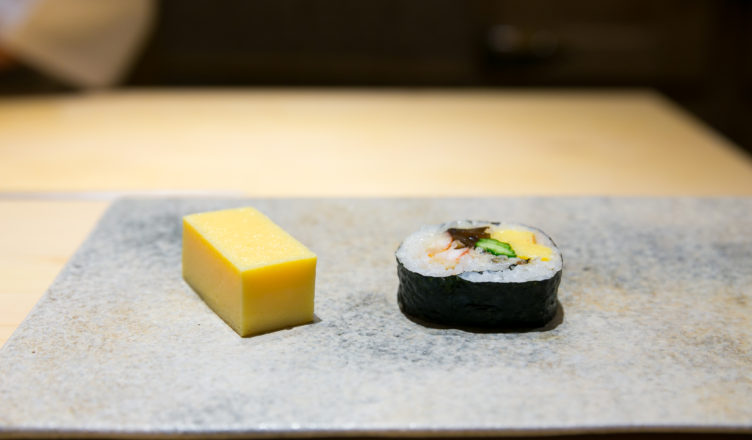I gave my English friend home-made sushi rice with some veggies and seaweed to enjoy it “roll it yourself (Temaki sushi)” style. The family loved it and asked for the recipe including Japanese omelette (dashi maki tamago) that I used for sushi.
Here is what I wrote in the email.
Here is the recipe.
Sushi Rice
For 3 cups of sticky rise (get a good one, preferably made in Japan), you need the following mix.
[Mix]
– 4 TBSP of rice vinegar
– 4 TBSP of sugar
– 1.5 TSP of salt
- Cook the rice normally. (I put the same amount of water as rice, cook it high till it boils, then turn it down to very low, simmer for 15 minutes, turn it up to high for 15 seconds, remove from heat and let it stand for 10 to 15 minutes)
- Spread the hot rice on a vat, sprinkle the mix over it, quickly mix it with rice using a spatula (but don’t do it too much. You want to move the spatula like a knife, not a whisk) while constantly fanning the rice to cool it down. You can ask kids to fan the rice while you mix it.
- Sprinkle the rice with sesame if you prefer
Shopping list:
– sticky rice
– nori seaweed
– rice vinegar
– sesame (optional)
– veggies of your choice
Japanese Omelette (dashi maki tamago):
Now this one is a bit more harder to do in Canada, since you need dashi stock, which is the source of umami, that requires very Japanese ingredients
If you are wondering what umami is, it’s the 5th taste sensation that makes your mouth water. Human tongue has taste bud for umami. Scientifically, umami is caused by glutamine acid and inosinic acid. In Western cuisine, ingredients that have a lot of umami are tomato and cheese.
There are three major ingredients that you can boil in water to get umami, bonito flakes, dried kelp, dried sardine. It used to depend on your family tradition which one to use. I use bonito flakes and kelp.
Compared to tomato, kelp has 10 to 22 times of glutamine acid, thus kelp stock tastes irresistible. Soup in Japanese food always uses dashi stock. Miso soup is dashi stock with miso (fermented soybean paste) added to it.
How to get dashi stock out of bonito flakes and kelp:
Bonito Flakes: Boil bonito flakes in boiling water and take them out after a few minutes. It leaves golden colored liquid stock.
Dried Kelp: Put kelp and water in a pot and turn on the heat. Remove the kelp right before the water boils. It is slightly green colored liquid stock.
Mixed stock: Mixed dashi stock uses both bonito flakes and kelp. It gives strong savory flavor.
If you are interested, there is a great book called “Sushi and Beyond” written by a British writer, Michael Booth. It covers a lot about dashi and umami. To tell you the truth, it’s from this book written by an English man that I learned all about umami. Ha ha.
Anyway, if you still want to give it a try, I recommend you use freeze-dried dashi stock called Hondashi. You can get in on Amazon.
If you dissolve this powder in lukewarm water, let it cool. Then add it to stirred egg along with a pinch of salt and some sugar to make omelette.
If you would rather do it in fully natural way, you can find bonito flakes and kelp at Asian food store.
You can follow the instruction above to get very tasty and smooth dashi stock.
If you are heading to Japanese store, ask for “Katsuo-bushi” for bonito flakes and “Kon-boo” for kelp.
You can make a lot of dashi stock, put it in a jar and use it for mouth-watering soup over a few days.
Shopping list:
– eggs- dashi stock OR bonito flakes OR dried kelp
Enjoy 🙂

